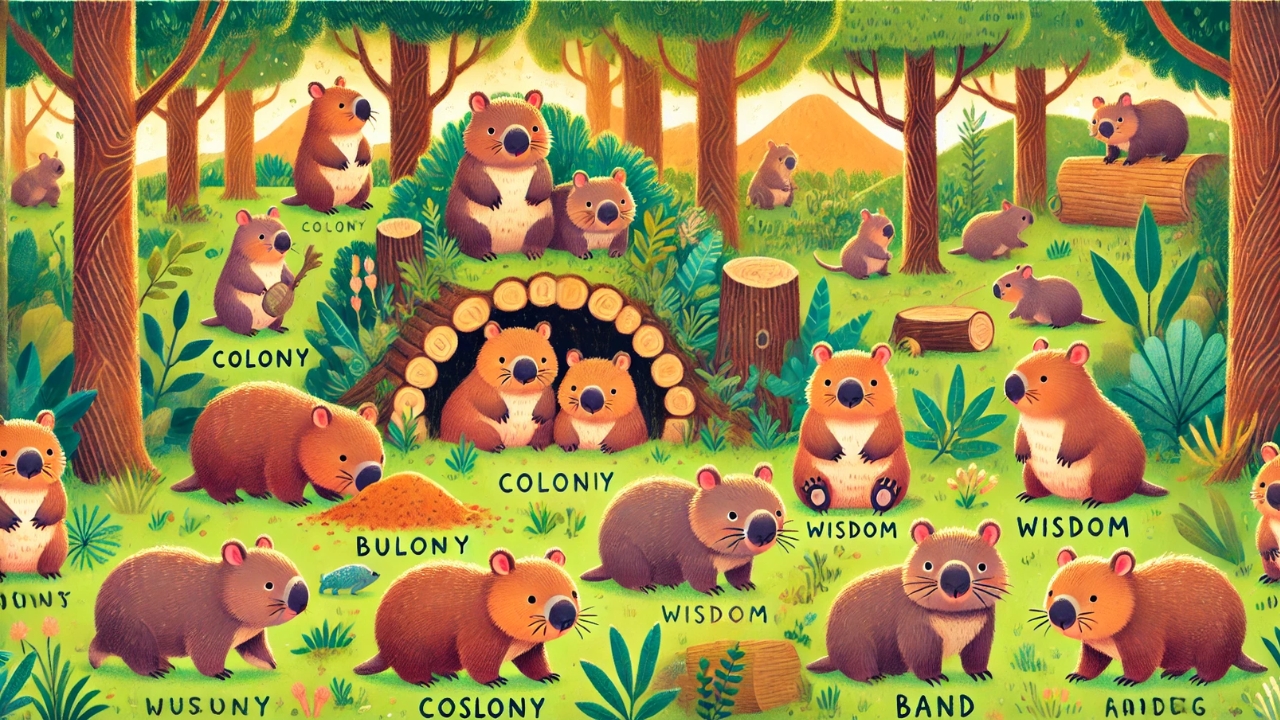Wombats are adorable, burrowing marsupials native to Australia. They are known for their strong claws, sturdy bodies, and love for digging tunnels. But did you know that a group of wombats has a special name? Let’s explore the fascinating collective nouns for wombats.
Collective Noun for Wombats
| Collective Noun | What It Describes |
|---|---|
| Wisdom | A group of wombats, often seen together. |
| Mob | A gathering of wombats in the wild. |
| Colony | A community of wombats living in interconnected burrows. |
| Nest | A small family of wombats sharing a burrow. |
| Band | A group of wombats moving or foraging together. |
Detailed Explanations and Examples for Wombats
1. Wisdom
A wisdom of wombats is the most well-known collective noun for these animals. It highlights their calm and thoughtful nature.
Examples:
- A wisdom of wombats rested under the shady trees.
- The wildlife guide spotted a wisdom of wombats near the rocky hills.
- A wisdom of wombats slowly wandered across the field.
2. Mob
A mob of wombats refers to a group of them gathered in one area, similar to how kangaroos are described.
Examples:
- A mob of wombats was seen grazing at sunset.
- The farmer noticed a mob of wombats digging near the fence.
- We saw a mob of wombats playing together in the forest.
3. Colony
A colony of wombats describes a group living together in burrows, which they dig with their strong claws.
Examples:
- A colony of wombats created a network of tunnels underground.
- Scientists studied a colony of wombats living in the nature reserve.
- The colony of wombats stayed close to their burrows for safety.
4. Nest
A nest of wombats refers to a small family living together in a burrow.
Examples:
- A mother wombat cared for her babies inside their nest.
- We found a cozy nest of wombats hidden under tree roots.
- The nest of wombats stayed inside their burrow during the storm.
5. Band
A band of wombats describes a group moving together while searching for food.
Examples:
- A band of wombats walked along the forest trail.
- The zookeeper watched a band of wombats exploring their enclosure.
- A band of wombats foraged for food in the early morning.
Conclusion
Wombats may be shy and quiet, but they are also social in their own way! Whether they are living in a colony, gathering as a mob, or moving as a band, these amazing marsupials have fascinating group names. Next time you see wombats, you’ll know exactly what to call them! Keep exploring and learning more about the wonderful world of animals.
